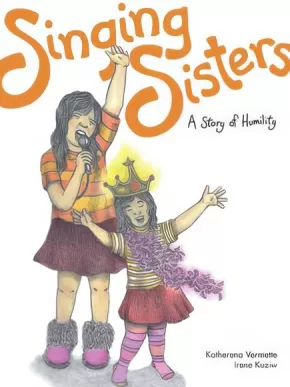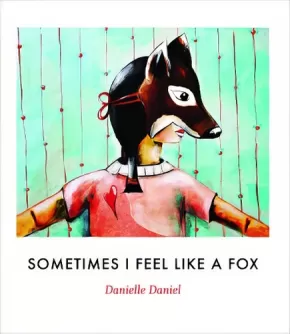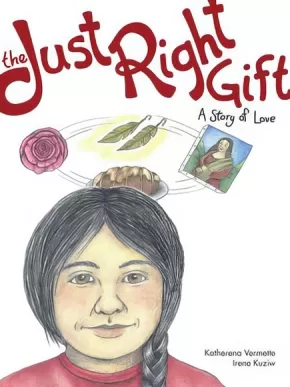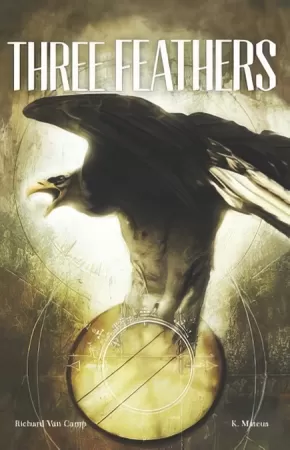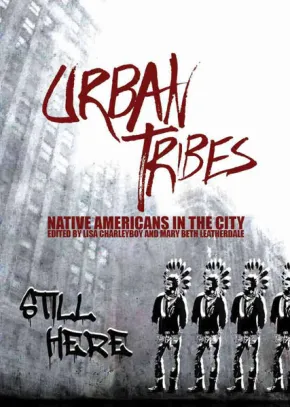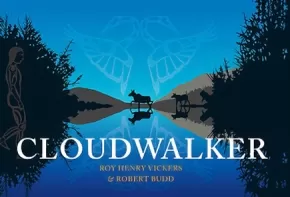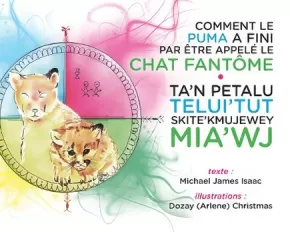
Canadian Indigenous Resource Lists
301
-
315
of
473 Results;
Sort By
Go To
of 32
River of Salmon Peoples
$32.95
Format:
Paperback
Text Content Territories:
Indigenous Canadian; First Nations;
ISBN / Barcode: 9781926886411
Synopsis:
Synopsis:
An expression of the people, culture, ceremony and songs along the Fraser, River of Salmon Peoples captures what the Fraser River, and its most valuable resource, the salmon, means to First Nations communities along its basin. The result of nine community engagements, extensive research over two years, and illuminating photographs and artwork, this book includes the oral narratives of each community along the river. While capturing timeless Indigenous stories and legends about the salmon and the river, this book is also an exploration of the future of the salmon and waters of the Fraser River.
Authenticity Note: After a team of researchers gathered a wealth of information from and about the indigenous cultures along the Fraser River, Jeannette Armstrong and Gerry William co-edited River of Salmon Peoples.
Road Allowance Kitten
$17.50
Artists:
Format:
Paperback
Text Content Territories:
Indigenous Canadian; Métis;
ISBN / Barcode: 9781926795720
Synopsis:
Synopsis:
They say, “Home is where the heart is.” For Rosie and Madeline, home also included their pet kitten. Imagine being told you have to leave your home … without your pet. Based on a true story, Road Allowance Kitten gives readers a glimpse into the history of the Road Allowance Métis and their forced removal from their humble, but beloved, homes on the road allowance. Award-winning children’s author Wilfred Burton skillfully shares this story through the eyes of the children involved. The vibrant illustrations by Christina Johns are the perfect accompaniment to this authentic vignette of a little-known part of Prairie history.
Comes with a CD featuring the English and Michif narrations of the book.
Singing Sisters
$9.95
Artists:
Format:
Paperback
Text Content Territories:
Indigenous Canadian; First Nations; Anishinaabeg;
ISBN / Barcode: 9781553795209
Synopsis:
Synopsis:
Ma'iingan knows she is a very good singer. Conflict erupts when her little sister wants to sing just like her.
Singing Sisters is one book in The Seven Teachings Stories series. The Seven Teachings of the Anishinaabe—love, wisdom, humility, courage, respect, honesty, and truth—are revealed in seven stories for children. Set in urban landscapes, Indigenous children tell familiar stories about home, school, and community.
Educator & Series Information
This book is part of The Seven Teachings Stories series, which are inspired by the Seven Sacred Teachings of the Anishinaabe—love, wisdom, humility, courage, respect, honesty, and truth. These stories are set in urban landscapes, where Indigenous children tell familiar stories about home, school, and community.
This resource is also available in French: Deux soeurs en harmonie : Une histoire sur l'humilité
Additional Information
24 pages | 6.00" x 8.00"
Sometimes I Feel Like a Fox
$12.99
Artists:
Format:
Paperback
Text Content Territories:
Indigenous Canadian; First Nations; Anishinaabeg;
ISBN / Barcode: 9781773061177
Synopsis:
Synopsis:
In this introduction to the Anishinaabe tradition of totem animals, young children explain why they identify with different creatures such as a deer, beaver or moose. Delightful illustrations show the children wearing masks representing their chosen animal, while the few lines of text on each page work as a series of simple poems throughout the book.
In a brief author’s note, Danielle Daniel explains the importance of totem animals in Anishinaabe culture and how they can also act as animal guides for young children seeking to understand themselves and others.
Reviews
"Sometimes I Feel Like a Fox is a story that introduces young readers to the Anishinaabe tradition of totem animals. It encourages young readers to identify with different creatures. The poem that flows throughout the book demonstrates that we all have something special within all of us." - The Dalai Lama Center
Educator & Series Information
Recommended for Grades K-2 for these subject areas: Art Education, Visual Arts, English Language Arts, Science, Social Studies.
This resource is also available in French: Parfois je suis un renard
This book is part of the Sometimes I Feel Like series.
Additional Information
40 pages | 8.25" x 10.00"
The First Day
$9.95
Artists:
Format:
Paperback
Text Content Territories:
Indigenous Canadian; First Nations; Anishinaabeg;
ISBN / Barcode: 9781553795216
Synopsis:
Synopsis:
Makwa has to go to a new school … and he doesn’t want to. How will he face his first day?
Educator & Series Information
The First Day is a book in the series The Seven Teachings Stories. The Seven Teachings of the Anishinaabe—love, wisdom, humility, courage, respect, honesty, and truth—are revealed in seven stories for children. Set in urban landscapes, Indigenous children tell familiar stories about home, school, and community.
This resource is also available in French: Le Premier jour: Une histoire sur le courage
Selected for inclusion in the Spring 2015 edition of Best Books for Kids & Teens (BBKT) by the Canadian Children's Book Centre.
Additional Information
24 pages | 6.00" x 8.00"
The Just Right Gift
$9.95
Artists:
Format:
Paperback
Text Content Territories:
Indigenous Canadian; First Nations; Anishinaabeg;
ISBN / Barcode: 9781553795193
Synopsis:
Synopsis:
Selected for inclusion in the Spring 2015 edition of Best Books for Kids & Teens (BBKT) by the Canadian Children's Book Centre.
Migisi loves his Gookom. Can he find the perfect gift to show her how much?
Educator & Series Information
The Just Right Gift is one book in The Seven Teachings Stories series. The Seven Teachings of the Anishinaabe—love, wisdom, humility, courage, respect, honesty, and truth—are revealed in seven stories for children. Set in urban landscapes, Indigenous children tell familiar stories about home, school, and community.
This resource is also available in French: Le cadeau parfait : Une histoire sur l'amour
Additional Information
24 pages | 6.00" x 8.00"
The Thundermaker
$14.95
Artists:
Format:
Paperback
Text Content Territories:
Indigenous Canadian; First Nations; Mi'kmaq;
ISBN / Barcode: 9781771083294
Synopsis:
Synopsis:
Mi’kmaw artist Alan Syliboy’s The Thundermaker is based on Alan’s spectacular mixed-media exhibit of the same name. In the book, Big Thunder teaches his son, Little Thunder, about the important responsibility he has making thunder for his people. Little Thunder learns about his Mi’kmaw identity through his father’s teachings and his mother’s traditional stories. Syliboy’s spectacular, vibrant artwork brings the story of Little Thunder to vivid life.
Educator Information
Recommended for ages 4 to 8
Additional Information
32 pages | 10.00" x 9.00" |
Three Feathers
$18.95
Artists:
Format:
Paperback
Text Content Territories:
Indigenous Canadian;
ISBN / Barcode: 9781553795360
Synopsis:
Synopsis:
Three young men—Flinch, Bryce, and Rupert—have vandalized their community and are sent by its Elders to live nine months on the land as part of the circle sentencing process. There, the young men learn to take responsibility for their actions and acquire the humility required to return home. But, when they do return, will they be forgiven for what they’ve done?
Three Feathers explores the power and grace of restorative justice in one Northern community and the cultural legacy that can empower future generations.
Three Feathers is the third title in The Debwe Series. Created in the spirit of the Anishinaabe concept debwe (to speak the truth), The Debwe Series is a collection of exceptional Aboriginal writings from across Canada.
Reviews
"Three Feathers is a graphic novel illustrated by stark, black and white images. Many of the frames have no captioning, inviting the reader to intuit the narrative. K. Mateus, the illustrator, makes imaginative use of Aboriginal symbols and motifs in this 48 page book; when Gabe is attacked, demonic figures shadow the background, and when Bryce rails at the members of the community sentencing circle, the image of an angry wildcat snarls behind him." - CM Magazine
Educator & Series Information
Grades 10-12 BC English First Peoples Resource for units on Childhood and Place-Conscious Learning.
Recommended for grades 9 to 12.
This book is part of The Debwe Series, which features exceptional Indigenous writings from across Canada.
This book is available in French: Trois Plumes
Additional Information
48 pages | 6.50" x 10.00"
Urban Tribes: Native Americans in the City
$14.95
Editors:
Format:
Paperback
Text Content Territories:
Indigenous Canadian; Indigenous American;
ISBN / Barcode: 9781554517503
Synopsis:
Synopsis:
The majority of Natives in North America live "off the rez." How do they stay rooted to their culture? How do they connect with their community?
Urban Tribes offers unique insight into this growing and often misperceived group. This anthology profiles young urban Natives and how they connect with Native culture and values in their contemporary lives.
Their stories are as diverse as they are. From a young Dene woman pursuing an MBA at Stanford University to a Pima photographer in Phoenix to a Mohawk actress in New York City, these urban Natives share their unique insight to bridge the divide between their past and their future, their cultural home, and their adopted cities.
Unflinchingly honest and deeply moving, the contributors explore a wide range of topics: from the trials and tribulations of dating in the city to the alienating experience of leaving a remote reserve to attend high school in the city, from the mainstream success of the Electric Pow Wow music genre to the humiliation of racist school mascots.
Each of the personal perspectives helps to illuminate larger political issues. An innovative and highly visual design offers a dynamic reading experience.
Educator Information
Recommended Ages: 11 - 18.
Recommended Authentic First Peoples resource.
Recommended English First Peoples resource.
Additional Information
136 pages | 6.75" x 9.50" | colour illustrations and photographs, foreward, introduction, bibliography
What is Truth, Betsy?
$9.95
Artists:
Format:
Paperback
Text Content Territories:
Indigenous Canadian; First Nations; Anishinaabeg;
ISBN / Barcode: 9781553795254
Synopsis:
Synopsis:
Miskwaadesi is puzzled about the teaching Truth. But she knows more than she thinks she does.
Educator Information
What is Truth, Betsy? is a part of the series The Seven Teachings Stories. The Seven Teachings of the Anishinaabe—love, wisdom, humility, courage, respect, honesty, and truth—are revealed in seven stories for children. Set in urban landscapes, Indigenous children tell familiar stories about home, school, and community.
Recommended for ages 4 to 8.
This resource is also available in French: Qu'est-ce que la verite, Betsy ?: Une histoire sur la vérité
Additional Information
24 pages | 6.00" x 8.00"
Wild Eggs
$13.95
Artists:
Format:
Paperback
Text Content Territories:
Indigenous Canadian; Inuit;
ISBN / Barcode: 9781772271492
Synopsis:
Synopsis:
Akuluk is not excited about visiting her grandparents in Nunavut. She would rather head south for summer vacation, somewhere with roller coasters and cotton candy. There can't be much to do way up there, Akuluk figures. But as soon as she steps off the plane and sees all the exciting animals that the tundra has to offer, Akuluk forgets all about her dreams of going south. On her first full day in Nunavut, she can't wait to travel out on the land with her grandfather to hunt for wild eggs.
As she learns about the different types of eggs, how to collect them properly, and the delicious meals that can be prepared with them, Akuluk knows that this is just the beginning of the exciting things she'll learn about the Arctic.
Additional Information
36 pages | 8.50" x 8.50" | Paperback Edition Published: 2018
Wisdom from our First Nations
$10.95
Format:
Paperback
Text Content Territories:
Indigenous American; Indigenous Canadian;
ISBN / Barcode: 9781927583555
Synopsis:
Synopsis:
In Indigenous cultures, elders serve as a bridge across time: they are connected to the past, they live in the present and they offer wisdom for the future. In these fascinating biographical essays, twelve First Nation and Native American elders share stories from their lives and tell what it was like to live in a time before television, cell phones and video games. Their stories explain how their humble childhoods shaped the adults they became and the lessons they share as elders. All the elders profiled work to ensure that their Native culture is passed down to members of their tribe. Settle in with this book and “listen” to the stories of these elders’ lives. As you take in their history, you just might gain wisdom that could make a difference in your own life.
Educator & Series Information
This book is part of the First Nations Series for Young Readers. Each book is a collection of biographies of First Nations, Métis, and Inuit women and men who are leaders in their fields of work, in their art, and in their communities.
For ages 9-14.
Additional Information
128 pages | 6.00" x 9.00"
Ancient Pathways, Ancestral Knowledge: Ethnobotany and Ecological Wisdom of Indigenous Peoples of Northwestern North America
$150.00
Format:
Hardcover
Text Content Territories:
Indigenous American; Indigenous Canadian;
Reading Level: N/A
ISBN / Barcode: 9780773543805
Synopsis:
Synopsis:
How knowledge of plants and environments has been applied and shared over centuries and millennia by Indigenous peoples.
Volume 1: The History and Practice of Indigenous Plant Knowledge
Volume 2: The Place and Meaning of Plants in Indigenous Cultures and Worldviews
Nancy Turner has studied Indigenous peoples' knowledge of plants and environments in northwestern North America for over forty years. In Ancient Pathways, Ancestral Knowledge, she integrates her research into a two-volume ethnobotanical tour-de-force. Drawing on information shared by Indigenous botanical experts and collaborators, the ethnographic and historical record, and from linguistics, palaeobotany, archaeology, phytogeography, and other fields, Turner weaves together a complex understanding of the traditions of use and management of plant resources in this vast region. She follows Indigenous inhabitants over time and through space, showing how they actively participated in their environments, managed and cultivated valued plant resources, and maintained key habitats that supported their dynamic cultures for thousands of years, as well as how knowledge was passed on from generation to generation and from one community to another. To understand the values and perspectives that have guided Indigenous ethnobotanical knowledge and practices, Turner looks beyond the details of individual plant species and their uses to determine the overall patterns and processes of their development, application, and adaptation.
Volume 1 presents a historical overview of ethnobotanical knowledge in the region before and after European contact. The ways in which Indigenous peoples used and interacted with plants - for nutrition, technologies, and medicine - are examined. Drawing connections between similarities across languages, Turner compares the names of over 250 plant species in more than fifty Indigenous languages and dialects to demonstrate the prominence of certain plants in various cultures and the sharing of goods and ideas between peoples. She also examines the effects that introduced species and colonialism had on the region's Indigenous peoples and their ecologies.
Volume 2 provides a sweeping account of how Indigenous organizational systems developed to facilitate the harvesting, use, and cultivation of plants, to establish economic connections across linguistic and cultural borders, and to preserve and manage resources and habitats. Turner describes the worldviews and philosophies that emerged from the interactions between peoples and plants, and how these understandings are expressed through cultures’ stories and narratives. Finally, she explores the ways in which botanical and ecological knowledge can be and are being maintained as living, adaptive systems that promote healthy cultures, environments, and indigenous plant populations.
Ancient Pathways, Ancestral Knowledge both challenges and contributes to existing knowledge of Indigenous peoples' land stewardship while preserving information that might otherwise have been lost. Providing new and captivating insights into the anthropogenic systems of northwestern North America, it will stand as an authoritative reference work and contribute to a fuller understanding of the interactions between cultures and ecological systems.
Educator Information
Table of Contents
Volume One
Figures and Tables ix
Preface and Acknowledgments xv
Note on the Writing System Used in This Book xxxi
1 Introduction to the Book: Ethnobotanical and Ethnoecological Knowledge across Time and Space 3
Part One | History
2 Into the Past: Ancient Relationships among People, Plants, and Environments 43
3 Reflections on Plant Names in Understanding the History of People-Plant Relationships 117
4 Change, Loss, and Adaptation of Plant Traditions 191
Part Two | Development
5 Plants as Food: Development, Diversity, Dissemination 263
6 Plant Use in Technology over Time and Space 335
7 Herbal Medicine and Healing Traditions 415
Appendix 1: Major Sources of Information for the Book 467
Appendix 2: Names of Selected Native Plant Species in Indigenous Languages of Northwestern North America 473
Appendix 3: Names of Two Introduced Plants (Turnip and Potato) in Indigenous Languages of Northwestern North America 507
Notes 515
Volume Two
Figures and Tables ix
Preface xiii
Part Three - Integration and ManaGement
8 Moving for the Harvest: Seasonal Rounds and Plant Knowledge 3
9 Cultural Institutions Related to Ethnobotanical Knowledge and Practice 51
10 Trade and Exchange: Sharing Plant Products and Ethnobotanical Knowledge across Geographical and Cultural Space 101
11 Management and Sustainability of Plant Resources and Habitats 145
Part Four - UnderlyinG Philosophy
12 Narratives in Transmission of Ethnobotanical Knowledge 231
13 Worldview and Belief Systems in Ethnobotanical Knowledge Systems 297
14 Ancient Pathways and New Pathways for Retaining and Renewing Botanical and Environmental Knowledge Systems for the Future 351
Notes 413
References 441
Index of Plant Species 503
General Index 513
Additional Information
1056 pages | 6.00" x 9.00" | Hardcover
Cloudwalker
$24.95
Format:
Hardcover
Text Content Territories:
Indigenous Canadian; First Nations; Gitxsan (Gitksan);
ISBN / Barcode: 9781550176193
Synopsis:
Synopsis:
Cloudwalker, describing the creation of the rivers, is the second in a series of Northwest Coast legends by Roy Henry Vickers and Robert Budd. Their previous collaboration, Raven Brings the Light (2013), is a national bestseller.
On British Columbia's northwest coast lies the Sacred Headwaters--the source of three of British Columbia's largest salmon-bearing rivers. These rivers are the source of life for all creatures in the area. But what gave life to the rivers themselves?
Astace, a young Gitxsan hunter, is intent on catching a group of swans with his bare hands. He is carried away by the birds' powerful wings and dropped in the clouds. With only a cedar box of water Astace wanders the clouds, growing weaker, stumbling and spilling the contents. When he finally returns to earth he discovers lakes, creeks, and rivers where there were none before. The Gitxsan rejoice at having him home, and name the new river they live alongside Ksien--"juice from the clouds."
Roy Henry Vickers' vibrant artwork, including 18 new prints, accompany this new retelling of an ancient story--readers of all ages will be captivated.
Educator & Series Information
This book is part of the Northwest Coast Legends series.
Other books in this series include:
Raven Brings the Light
Cloudwalker
Orca Chief
Peace Dancer
Recommended for ages 3 to 6.
Additional Information
40 pages | 12.00" x 8.25"
Comment le Puma a fini par etre appele le Chat Fantome / Ta'n Petalu Telui'tut Skite'kmujew Mia'jw
$14.95
Artists:
Format:
Paperback
Text Content Territories:
Indigenous Canadian; First Nations; Mi'kmaq;
ISBN / Barcode: 9781552666715
Synopsis:
Synopsis:
Pris entre deux mondes, le puma a du mal à trouver un lieu où il est à sa place. En tant que chat fantôme, le puma vit comme il le devrait : dans la forêt, mais sans ses amis.
Misinsit miawe'k tapu'kl wskitqamu'kl, Ajik alme'si wejitoq ta'n tett tleyawit. Skite'kmujewey Mia'wj mimajit ta'n tel nenk 'kisoqe'k pasik mu eymu'kk witapk.
Educator Information
This resource is also available in English and Mi’kmaw: How The Ghost Came to be Called the Ghost Cat / Ta'n Petalu Telui'tut Skite'kmujew Mia'jw.
Additional Information
42 pages | 14.00" x 11.00"
Sort By
Go To
of 32





